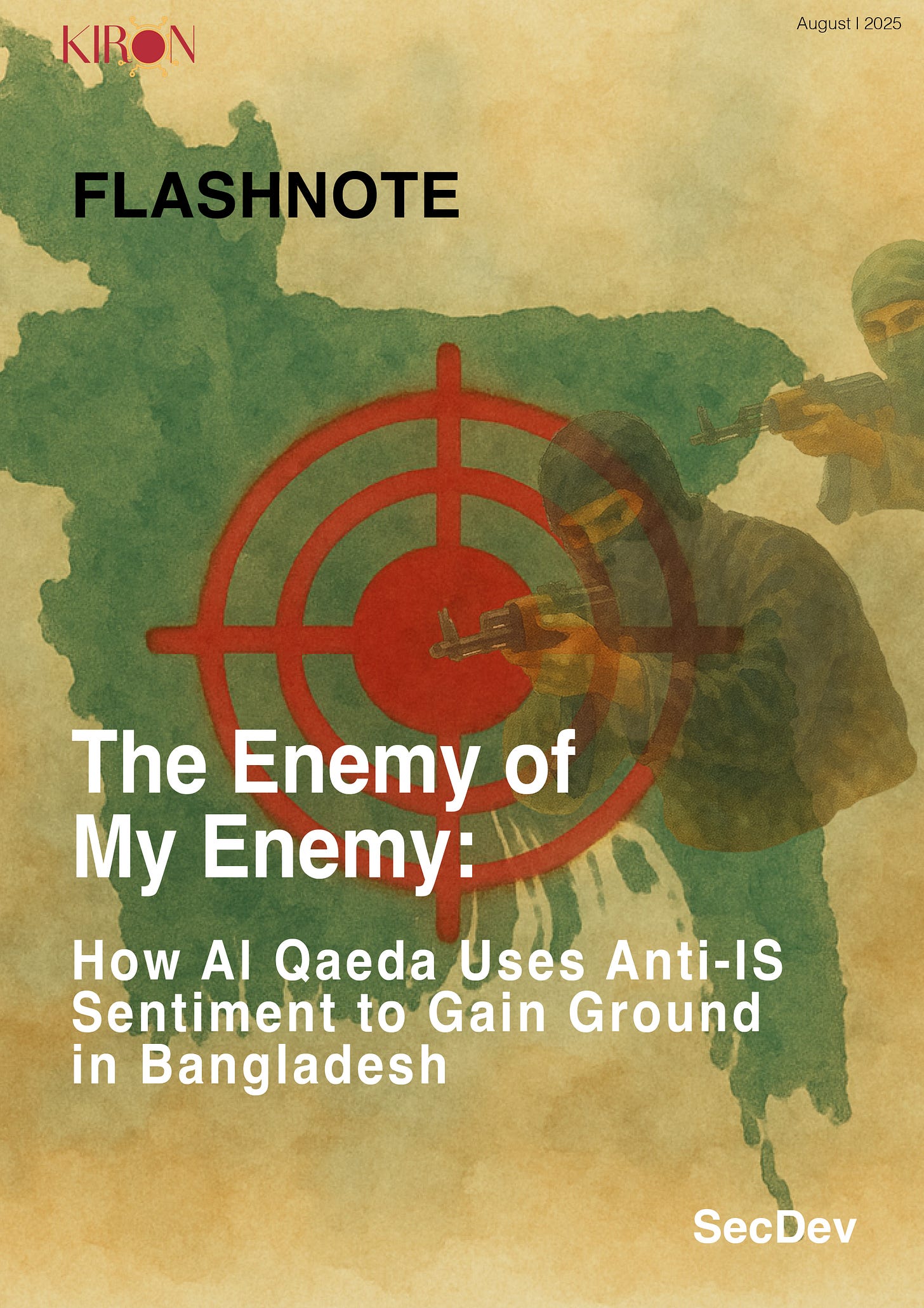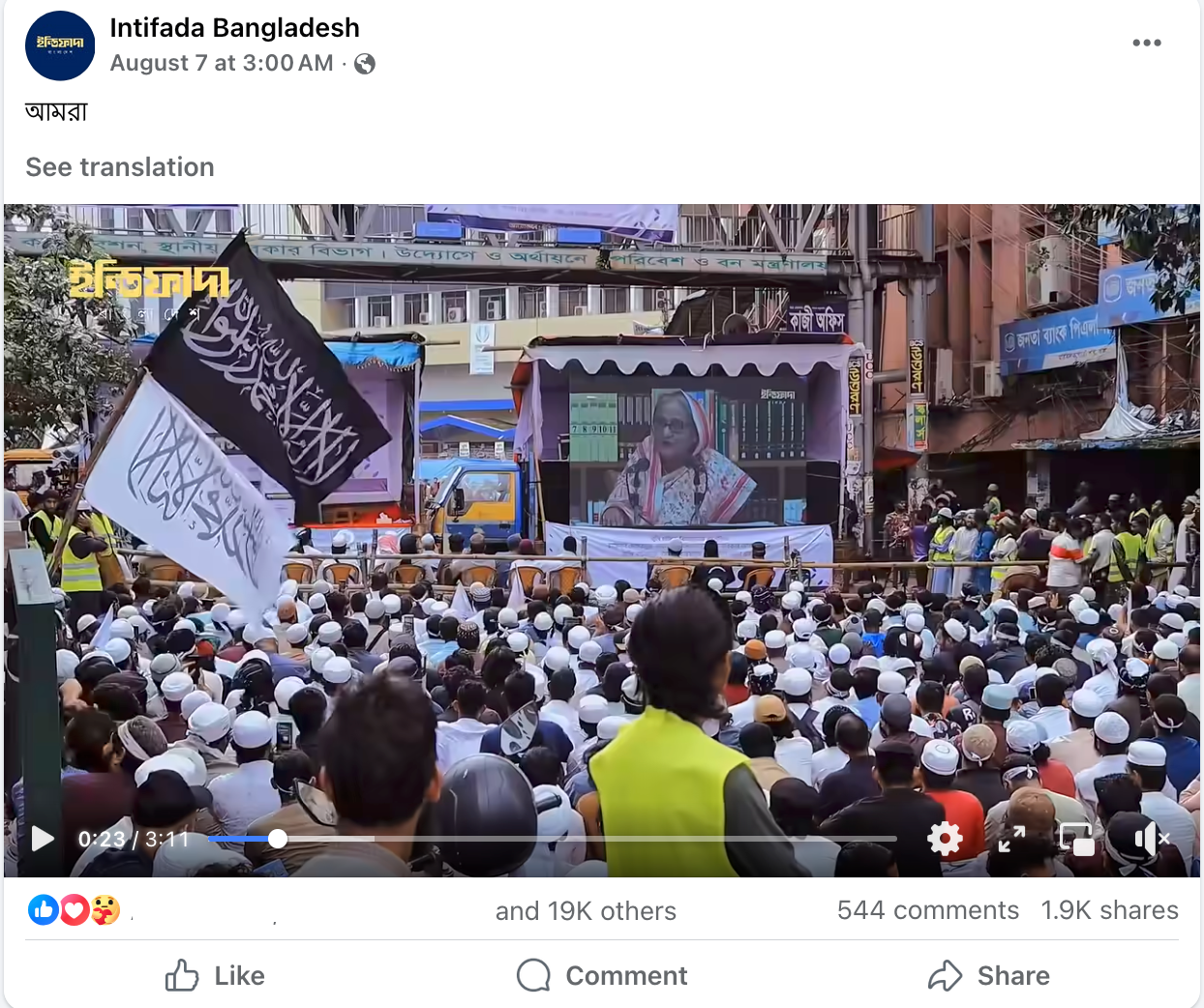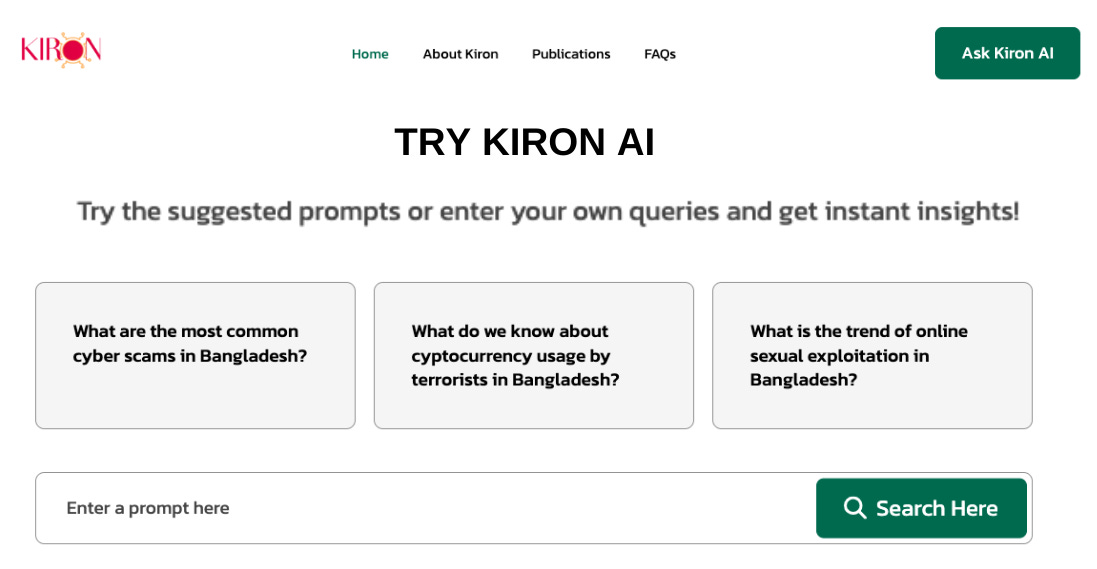FLASHNOTE: The Enemy of My Enemy
How Al Qaeda Uses Anti-IS Sentiment to Gain Ground in Bangladesh
Al Qaeda supporters in Bangladesh are weaponizing public hatred of Islamic States (IS, also referred to as ‘Daesh’ and ‘Dawlah’) to shield their own movement, with Intifada Bangladesh serving as the primary vehicle for this sophisticated deception campaign. As the 2016 Holey Artisan Bakery attack created lasting public revulsion against IS, Al Qaeda sympathizers recently started to exploit this stigma systematically, through a layered narrative strategy that positions IS as the sole extremist threat while obscuring Al Qaeda's equally violent ideology. This calculated approach is likely to enable unprecedented public mobilization of extremist narratives, systematic infiltration of mainstream political discourse, and the creation of recruitment pipelines from legitimate Islamist organizations. The convergence of historical state abuse, sophisticated narrative manipulation, and documented infiltration capabilities represents a critical evolution in terrorist strategy that threatens Bangladesh's democratic consolidation.
Key Findings
Dual-track narrative warfare: Intifada Bangladesh (IB) operates as an Al Qaeda front using careful religious terminology ("Khariji") to condemn IS while promoting Al Qaeda in the Indian Subcontinent (AQIS/ AQS) ideology, supported by explicit Al Qaeda ideologues on Facebook who directly name and criticize IS, creating a sophisticated division of roles for maximum impact.
Mainstreaming extremist discourse: Open feuding between IS and Al Qaeda supporters has moved violent extremist narratives from closed networks into public forums, with alleged IS influencers themselves acknowledging that public confrontations jeopardize operations for both factions.
Exploitation of institutional distrust: Years of documented extrajudicial killings and enforced disappearances by security forces have created public skepticism that Al Qaeda fronts systematically exploit to discredit legitimate counter-terrorism efforts and establish themselves as more authentic voices than state actors.
Strategic infiltration operations: Historical Jamaat-Shibir mole operations within Awami League structures, including at least two Intifada Bangladesh founders being ex-Chhatra League members, signal systematic penetration tactics that continue to threaten both mainstream political organizations and extremist networks.
Figure: Screenshot of a video from Intifada Bangladesh’s Facebook channel that shows displaying Al Qaeda and Taliban flags during the organization’s first public rally on August 5. The video was viewed over 221,000 times and received about 20,000 interactions.
We are excited to announce Kiron AI, our innovative AI tool designed to assist you in research, particularly in the areas of digital harms and extremism in Bangladesh.
Kiron AI allows you exclusive access to draw insights from a decade's worth of SecDev reports. This tool is particularly valuable for those focused on understanding the nuances and developments in digital harms and extremism within the Bangladeshi context.
We are offering early access to interested subscribers of our monthly reports. This is a unique opportunity to be among the first to test Kiron AI and provide feedback that will shape its future development. Please click the link below to express your interest. Your insights will be crucial in refining Kiron AI to better meet your research needs.
As we move forward, we plan to extend access to Kiron AI to all subscribers of the SecDev reports, making this powerful tool widely available.




